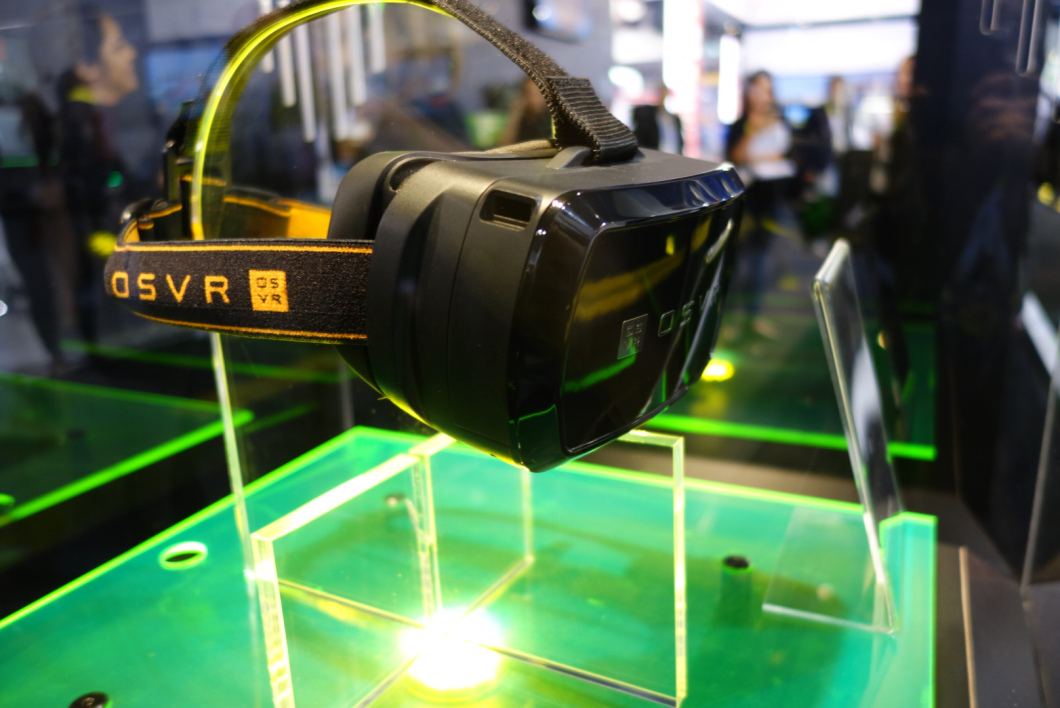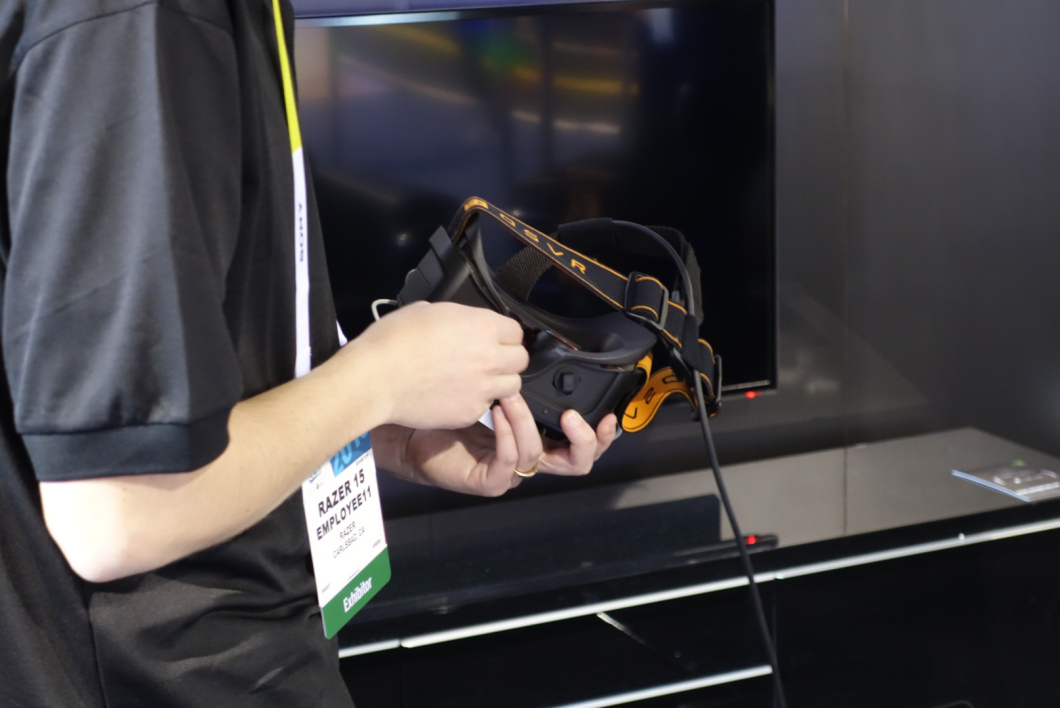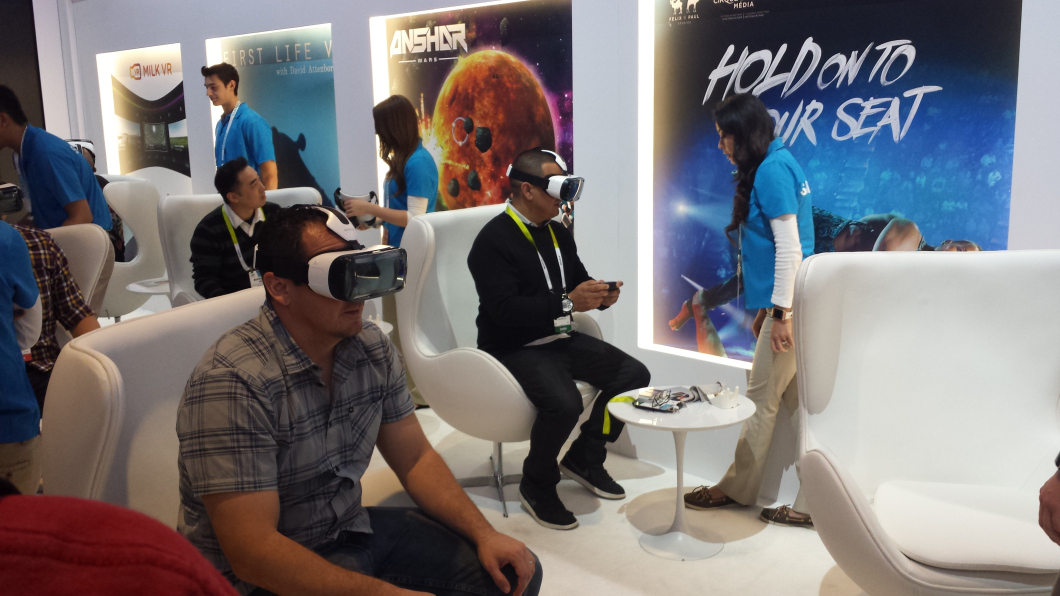From Samsung To Razer To Oculus, Our Experience With The Latest In Virtual Reality

Razer’s Open Source VR (OSVR) headset is still a way off from the retail market, but the prototype we tried showed a lot of promise.
A year ago, the Oculus Rift virtual reality headset came out of (virtually) nowhere to win the Best Of award at CES. A few months later, Facebook bought the company for $2 billion.
Recently, Oculus tech was integrated into a Samsung VR device, the Samsung Gear VR, which was the first of three headsets we tried out during our trek around the Las Vegas Convention Center.
The Gear VR has actually been on the market for a short time, but only through the Samsung website. Additionally, while it only costs $199, it requires a Samsung Note 4 smartphone, so if you don’t have that device, you just have a headset you can strap on for the purpose of bumping into stuff.
But is it any good? Thanks for asking.
The short answer is yes. In our tests, it reacted well to our eye movements — which can be used to move cursors around the screen — and our head movements.
The most enjoyable experience for the Gear for us involved watching a series of pre-recorded videos that allow you to look around the scene in a full 360 degrees with a turn of your head. One particular piece — aerial footage from a flight over and around Hong Kong — actually made our knees a bit weak when we dared to look down and see nothing between the ground and us.
Gaming on the Gear VR was more hit or miss. Some games are playable with just your eyes or by moving your head around, but others required a separate controller. Problem is, you can’t see the controller (or your hands) so you have little to no idea what you’re doing unless you’ve mastered the layout of the controller.
 This particular issue is one that gaming hardware company Razer is attempting to address in its design for its Open Source VR headset.
This particular issue is one that gaming hardware company Razer is attempting to address in its design for its Open Source VR headset.
Even though the device is still in the prototype stage, Razer decided to show how far it has developed the tech, and we’re glad it didn’t shy away from showing an in-development product.
The OSVR can actually see your hands when they are within view of your eyes, and without the use of any hardware in addition to the headset.
That said, it didn’t always do a perfect job of being able to distinguish between right and left hand, especially when moving your head quickly, which is likely to happen in a gaming situation where you can be beset on all sides by foes. Razer techs we spoke to believe this is a software issue that will be fixed as development continues.
The most exciting aspect of the OSVR is right there in its name. It’s open-source in both its software and hardware, meaning developers will be able to tweak and customize based on what Razer has provided for them.
For example, even though Razer makes headphones, the company currently doesn’t think it will integrate headphones into the initial OSVR, mostly because gamers can get very particular about their headphones so they can continue to wear their earpieces of choice. However, a developer could take the basic design of the OSVR and tweak it to integrate headphones or include a headphone jack.
Razer says it hopes to have developers kits of the OSVR available this summer for around $200. A commercial release of the product will ultimately depend on how quickly developers can provide enough content to make it worth the purchase.

The demo prototype of the Razer OSVR had some technical issues when we were at the booth, but Razer engineers were on hand to get it working.
And that brings us to the latest project from Oculus…
Unlike the Samsung Gear VR and Razer OSVR, where we sat in comfy chairs and couches to enjoy the experience, the Oculus Crescent Bay prototype demo takes place in a padded chamber, standing up.
As someone who once got motion sick while watching the Christopher Guest mockumentary “Best in Show,” this was especially intimidating.
It took a little maneuvering and adjusting to get the prototype headset over our eyeglasses, but it wasn’t uncomfortable. On the floor is a small pad and you’re instructed to practice feeling the edge with your toes. You’re not to move past the pad. A positional camera mounted on the wall tracks where you move, while the headset registers the movements of your head, creating a truly immersive experience. You can actually walk around these environments.
The resolution of the headset is very good, and the detail of the rendered environments is impressive, as is the sound. Bullets whiz by your head. You can dodge them, and duck. Objects have detail and texture, and you can move in and study them as if they were really there.
The demo included several different types of environments, ranging from slightly scary (a T-rex charging toward you down a long hallway) to humorous (an alien who seemed displeased with us, and a PIxar-esque robot battle that included a giant rubber duck) to downright trippy (standing at the edge of a steep drop off that genuinely made our knees weak, as heights are not our jam.)
The verdict? We didn’t get motion sick, even those of us who get sick from 100% of first-person shooter games and can’t even play Portal for more than 10 seconds without becoming violently, violently ill. (Not an exaggeration.)
The Crescent Bay prototype felt natural and real, and yet not. Like a dream.
Want more consumer news? Visit our parent organization, Consumer Reports, for the latest on scams, recalls, and other consumer issues.




